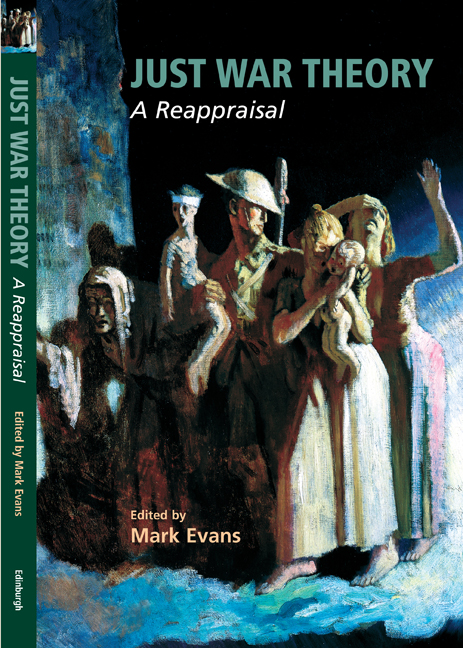Book contents
- Frontmatter
- Contents
- Notes on the Contributors
- Preface and Acknowledgements
- Introduction Moral Theory and the Idea of a Just War
- JUST CAUSE
- 1 The Justice of Preemption and Preventive War Doctrines
- 2 Punitive Intervention: Enforcing Justice or Generating Conflict?
- 3 In Humanity’s Name: Democracy and the Right to Wage War
- JUSTICE IN THE CONDUCT OF WAR
- 4 The Concept of Proportionality: Old Questions and New Ambiguities
- 5 Just War? Just Children?
- 6 Is There a Supreme Emergency Exemption?
- JUSTICE AND THE END OF WAR
- 7 Security Beyond the State: Cosmopolitanism, Peace and the Role of Just War Theory
- 8 Forgiveness and Reconciliation in Jus Post Bellum
- CONCLUSION
- In Defence of Just War Theory
- Bibliography
- Index
4 - The Concept of Proportionality: Old Questions and New Ambiguities
Published online by Cambridge University Press: 03 October 2020
- Frontmatter
- Contents
- Notes on the Contributors
- Preface and Acknowledgements
- Introduction Moral Theory and the Idea of a Just War
- JUST CAUSE
- 1 The Justice of Preemption and Preventive War Doctrines
- 2 Punitive Intervention: Enforcing Justice or Generating Conflict?
- 3 In Humanity’s Name: Democracy and the Right to Wage War
- JUSTICE IN THE CONDUCT OF WAR
- 4 The Concept of Proportionality: Old Questions and New Ambiguities
- 5 Just War? Just Children?
- 6 Is There a Supreme Emergency Exemption?
- JUSTICE AND THE END OF WAR
- 7 Security Beyond the State: Cosmopolitanism, Peace and the Role of Just War Theory
- 8 Forgiveness and Reconciliation in Jus Post Bellum
- CONCLUSION
- In Defence of Just War Theory
- Bibliography
- Index
Summary
The main problem with the principle of proportionality is not whether or not it exists but what it means and how it is to be applied.
INTRODUCTION
In November 2001, in the first few months of the war on terrorism, US and UK forces in Afghanistan, together with the Northern Alliance, rounded up more than 400 Taliban and suspected al-Qaeda fighters and brought them to the Qala-i-Jangi fortress outside of Mazar-i-Sharif. They neglected to disarm the prisoners completely, and in the midst of some initial interrogation procedures, some of the detainees detonated some grenades, seized weaponry and rioted. In response, airstrikes were called in, and over the next twelve hours they proceeded to bomb the prison relentlessly, eventually killing all 400 prisoners. A few days later, US Secretary of Defense Donald Rumsfeld was asked, during his daily press briefing, whether the response might have been ‘disproportionate’. He replied:
Now, the word ‘proportion’ – ‘proportionate’ is interesting. And I don't know that it's appropriate. And I don't know that I could define it. But it might be said – and I wouldn't say it – (laughter) – but it might be said by some that to quickly and aggressively repress a prison riot in one location might help dissuade people in other locations from engaging in prison riots and breaking out of prison and killing more people. I don't know if that's true. It might also persuade the people who are still in there with weapons, killing each other and killing other people, to stop doing it. It's – ah – your question's too tough for me. I don't know what ‘proportionate’ would be.
Despite Rumsfeld's confusion, the idea of proportionality is one of the oldest and most central concepts of just war theory, and has long been formalised in both the law of armed conflict and military strategy. Along with the requirement of discrimination between combatants and noncombatants, ‘proportionality’ attempts to make the violence of war proportionate to the threat it is meant to overcome, and make the unintended mistakes of a war proportionate to their intended benefits. Proportionality figures prominently in judgements about the justice of a war itself, jus ad bellum, and the justice of the means employed, jus in bello. It is also used in thinking about punishment, including issues of post-conflict justice or jus post bellum.
- Type
- Chapter
- Information
- Just War TheoryA Reappraisal, pp. 93 - 113Publisher: Edinburgh University PressPrint publication year: 2020



